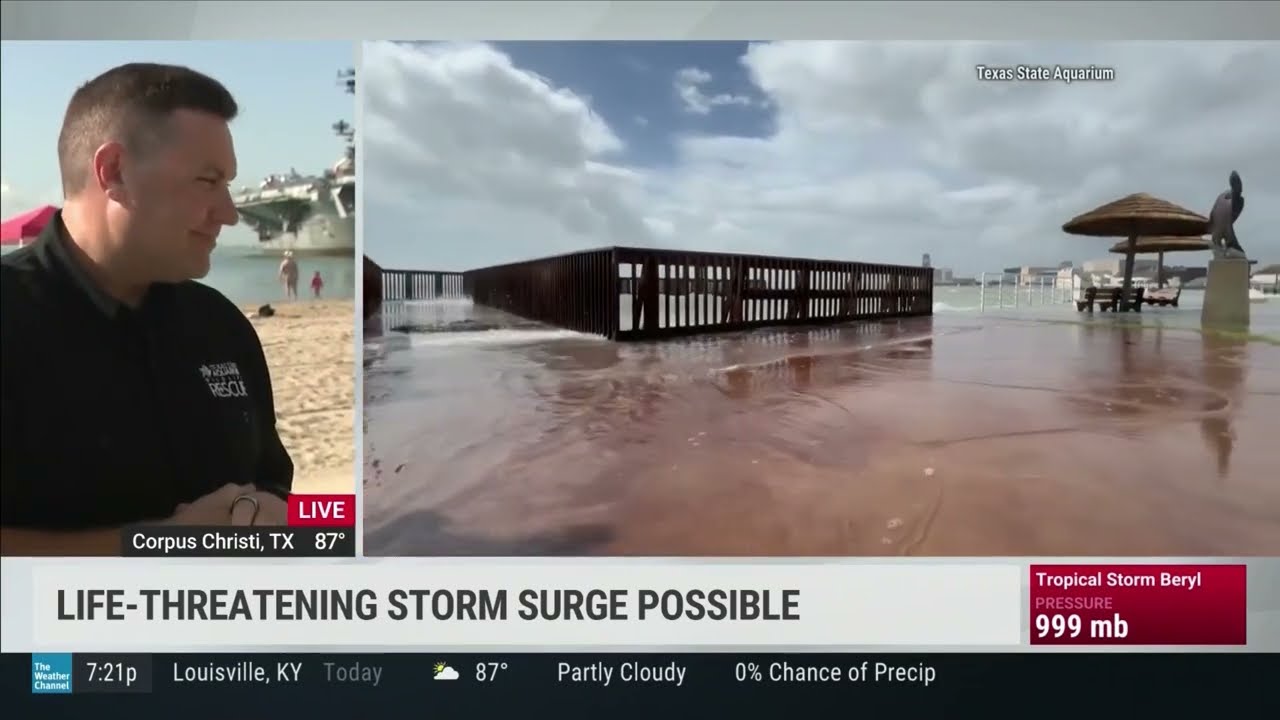- The impact of Hurricane Beryl on the Texas State Aquarium and its critical preparations to safeguard marine life and terrestrial animals.
- Detailed response strategies by the Texas State Aquarium staff to mitigate risks associated with hurricanes, focusing on state-of-the-art safety protocols.
- The role of wildlife conservation efforts during natural disasters and how zoological institutions position themselves as custodians of biodiversity.
- Insights into zoo management practices for extreme weather events, showcasing logistical and engineering solutions for animal safety and welfare.
- The importance of public awareness and educational outreach by zoological institutions like the Texas State Aquarium during severe weather conditions.
Hurricane Beryl approached the Texas coastline with relentless intensity, testing the preparedness of one of the Lone Star State’s cherished establishments, the Texas State Aquarium. The specter of hurricanes compels zoological institutions to bolster their defenses against nature’s fury. Preparations, meticulous and deliberate, are integral to safeguarding the lives of the aquarium’s residents. The Aquarium’s precautions highlight the intricate relationship between humanity and wildlife conservation against the backdrop of turbulent weather.
The impact of hurricanes on aquariums is multifaceted. There’s a direct physical threat to animal enclosures from strong winds and rising waters. Facilities must underpin robust infrastructure to withstand such assaults. At the Texas State Aquarium, preparations commence well ahead of the storm’s arrival. Marine life, particularly stressed by abrupt environmental changes, requires delicate adjustments in their habitats to remain stable. An understanding of these creatures’ biological needs is indispensable.
For terrestrial residents, enclosures are reinforced to ensure protection from structural damage. The Texas State Aquarium adopts innovative measures to maintain essential life-support systems. These include redundant power supplies and secure backups for vital equipment. Aquatic systems demand precise control over water quality, which could be compromised during power failures.
Preparedness extends beyond maintenance of physical structures. Staff efforts encompass a comprehensive response strategy. Teams are mobilized to implement evacuation procedures and ensure seamless communication channels. Coordinating with local agencies like emergency services facilitates a swift response. Employee training emphasizes the importance of adaptability in challenging scenarios, fostering a culture of alertness and dedication.
Conservation amid calamity takes center stage during events like Hurricane Beryl. The aquarium’s role goes beyond preservation of individual lives. It acts as a bastion of education to illustrate broader environmental issues. Natural disasters exemplify the fragility of biodiversity. Public outreach becomes imperative. Aquariums are obligated to inform and engage communities, showcasing how interconnected human actions and the natural world truly are.
Training and drills prepare personnel for worst-case scenarios, honing their ability to execute quick decisions under pressure. The Texas State Aquarium employs tactical foresight in reinforcing animal care protocols, ensuring species-specific responses that cater to each creature’s physiological demands.
Zoo management practices for extreme weather events require an amalgam of logistics, engineering, and empathy. Handling thousands of species necessitates profound knowledge of animal behavior and welfare. Crafting species-specific shelter protocols for hurricanes, in particular, challenges curators to be astute in devising innovative solutions.
From designing flood-resistant habitats to erecting wind shields, the logistical feats achieved during preparatory stages are remarkable. Animal nutrition and hydration must proceed without interruption, necessitating calculated planning and resource allocation. In cases where evacuation is impractical, animals are relocated to fortified enclosures, away from the immediate threat.
Engineering solutions often play a pivotal role in defending zoo and aquarium premises against natural threats. Structural reinforcements are applied, protective barriers erected, and drainage systems optimized to prevent flooding. The Texas State Aquarium serves as a case study in implementing adaptive infrastructure plans to shield its inhabitants effectively.
Aside from physical preparations, psychological readiness is also cultivated. Trust between caretakers and animals is nurtured to alleviate stress. Human respondents train to detect behavioral changes indicative of distress, arming themselves with numerous de-escalation methods.
During Hurricane Beryl, the Texas State Aquarium leveraged its educational outreach to elevate public cognizance. By hosting forums and using various media channels, the facility imparted knowledge on wildlife conservation and the importance of preserving natural habitats. Creating awareness about the plight animals face during natural calamities fosters empathy and spurs sustainable action among the populace.
The intersection of natural disaster readiness and zoology underscores an important educational narrative. It underlines the responsibility these institutions bear in facilitating harmony between humans and wildlife amid a changing climate. Conservation education, particularly that which aligns with real-world phenomena, is pivotal in grooming future stewards of the environment.
Informational panels, augmented reality displays, and scientific presentations transform aquariums into vibrant hubs of learning. They provide visceral experiences designed to motivate care for the planet. By drawing parallels between local and global ecological issues, facilities like the Texas State Aquarium endeavor to inspire proactive environmental stewardship.
Ultimately, Hurricane Beryl demonstrated the invaluable resource that the Texas State Aquarium is to wildlife and the broader community. It embodies the spirit of resilience, adaptation, and commitment vital to overcoming the challenges natural calamities pose. As the aquarium continually evolves its methodologies, it stands as a symbol of intergenerational efforts to conserve the planet’s biodiversity and sustain its splendor for years to come.
*****
Source Description
Texas State Aquarium’s President and CEO Jesse Gilbert speaks to Molly McCollum from The Weather Channel about the Aquarium’s preparations for Hurricane Beryl.


